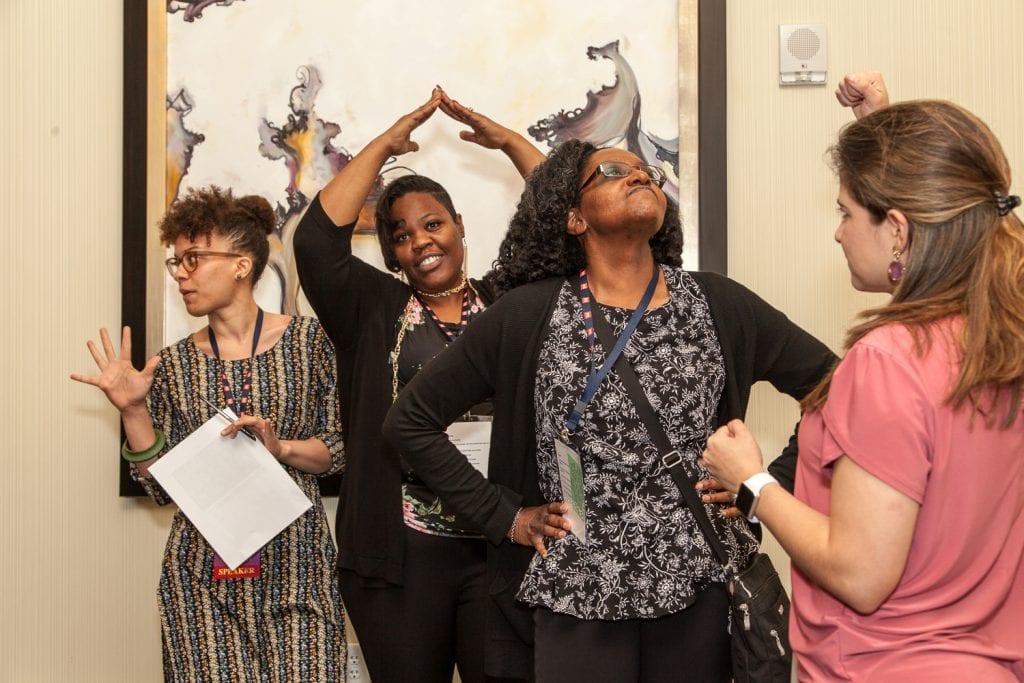
PolicyLink led a session at the People and Places 2019 conference where attendees participated in a theater exercise. Photo courtesy of People & Places 2019
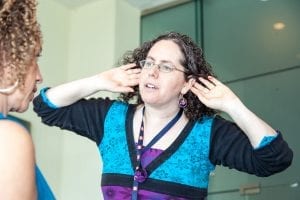
Shelterforce editor Miriam Axel-Lute with her group during the People and Places 2019 conference. Photo courtesy of People & Places 2019
“Oh, she’s up on a chair.”
They were talking about me, but the scene wasn’t a hotel bar. In fact it was a bright and early morning on the first day of the People & Places 2019 conference, the sun streaming through the glass wall of the room my small breakout group had claimed.
We were launching into a theater exercise from Theater of the Oppressed. Our instructions had been to take a racial equity challenge one member of our group was facing, and create a still tableau that represented it. We were to try to shape our orientations, distances, postures, and attitudes to represent the problem, not only visually, but in an embodied way. We left one observer on the outside who would then tap one person on the shoulder and take their place but change something about how they were interacting with the tableau. The person who stepped out would then do the same (in the case of our group at least, with much consultation from everyone), with four or five rounds moving the scene closer toward a more positive outcome.
Our group had chosen a situation in which social work students from a large university would repeatedly show up in surrounding low-income neighborhoods for a semester or two, do their projects, and disappear. Representing the university, I was up on a chair, looking over the city from on high, in a lecturing pose, while the community sat at my feet and students stood at my back.
As the exercise progressed, community members moved forward to become more engaged with the university and students. When the community stood up, I as the university first started to listen and then sat down myself.
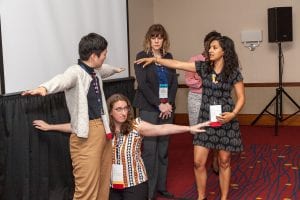
Another group performs an equity scene. Photo courtesy of People & Places 2019
When we got back together, some of the other groups reproduced their tableaus for us and shared their insights. Some that struck me were when a person representing a Black church tried to turn outward to face their community more, but struggled to do so because their “community” was fractured geographically into a couple different places. In another, a social service agency reconsidered its location in relation to a safe place to cross a dangerous road on foot. It’s perhaps no surprise that the ending scenarios often looked more circular than the starting ones.
I’m a words person, and it can take a little bit for me to let myself break out of verbal-heavy modes of engaging with problems, but this exercise was easier, less forced or hokey, and more insightful than I might have expected going in. I don’t think it produced any capital A answers, but it did seem to leave participants thinking about their equity-based scenarios from fresh angles. It was a good look at the ways techniques from the arts world can help us envision and re-envision relationships and systems, in order to spot stress points and opportunities. Kudos to session organizer PolicyLink for the chance to experience one of the many ways arts practice can support the process of community development. (See their slides from the session.)
The People & Places 2019 conference was a collaboration between NACEDA, the National Association for Latino Community Asset Builders, and National CAPACD.


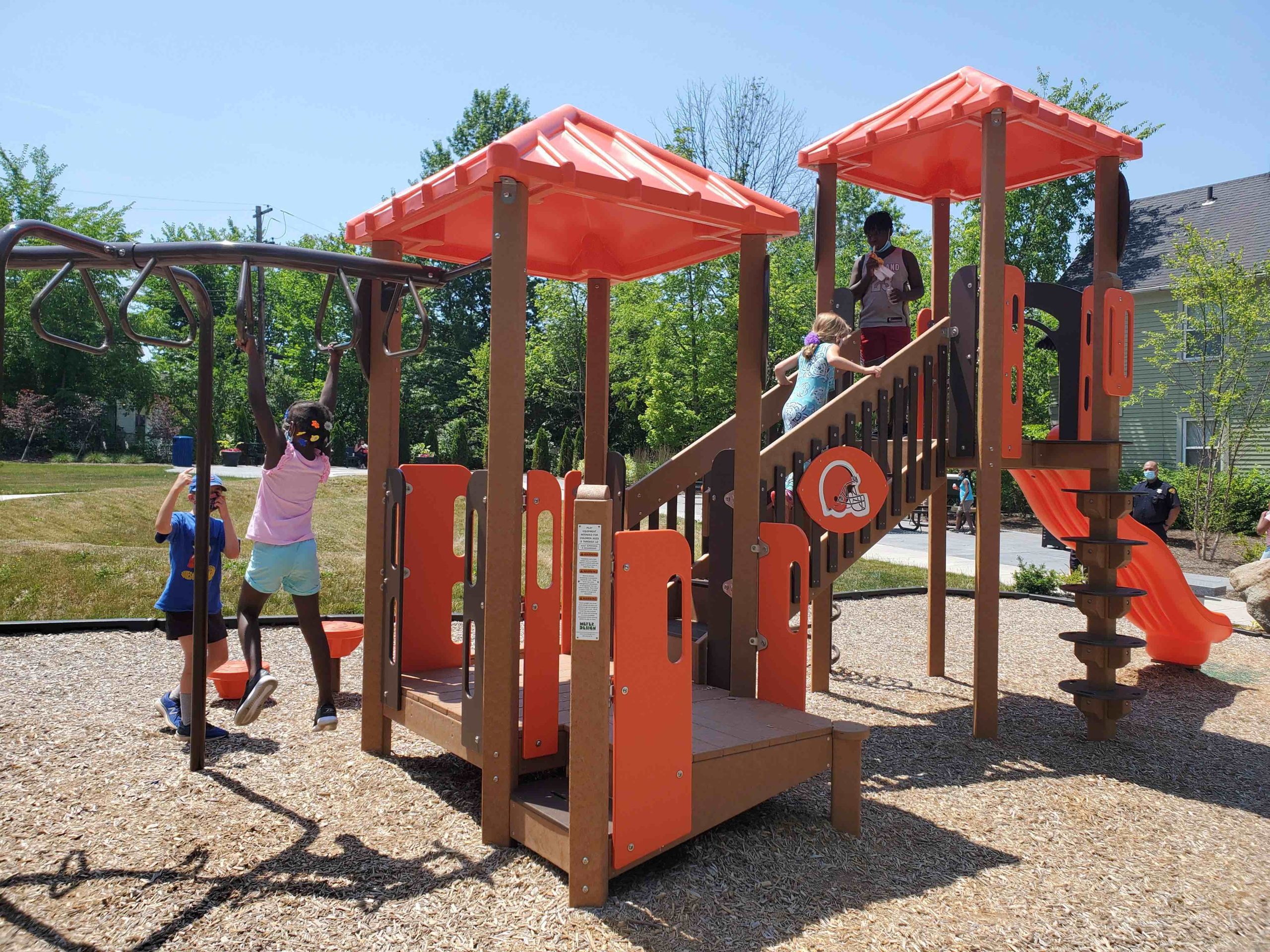
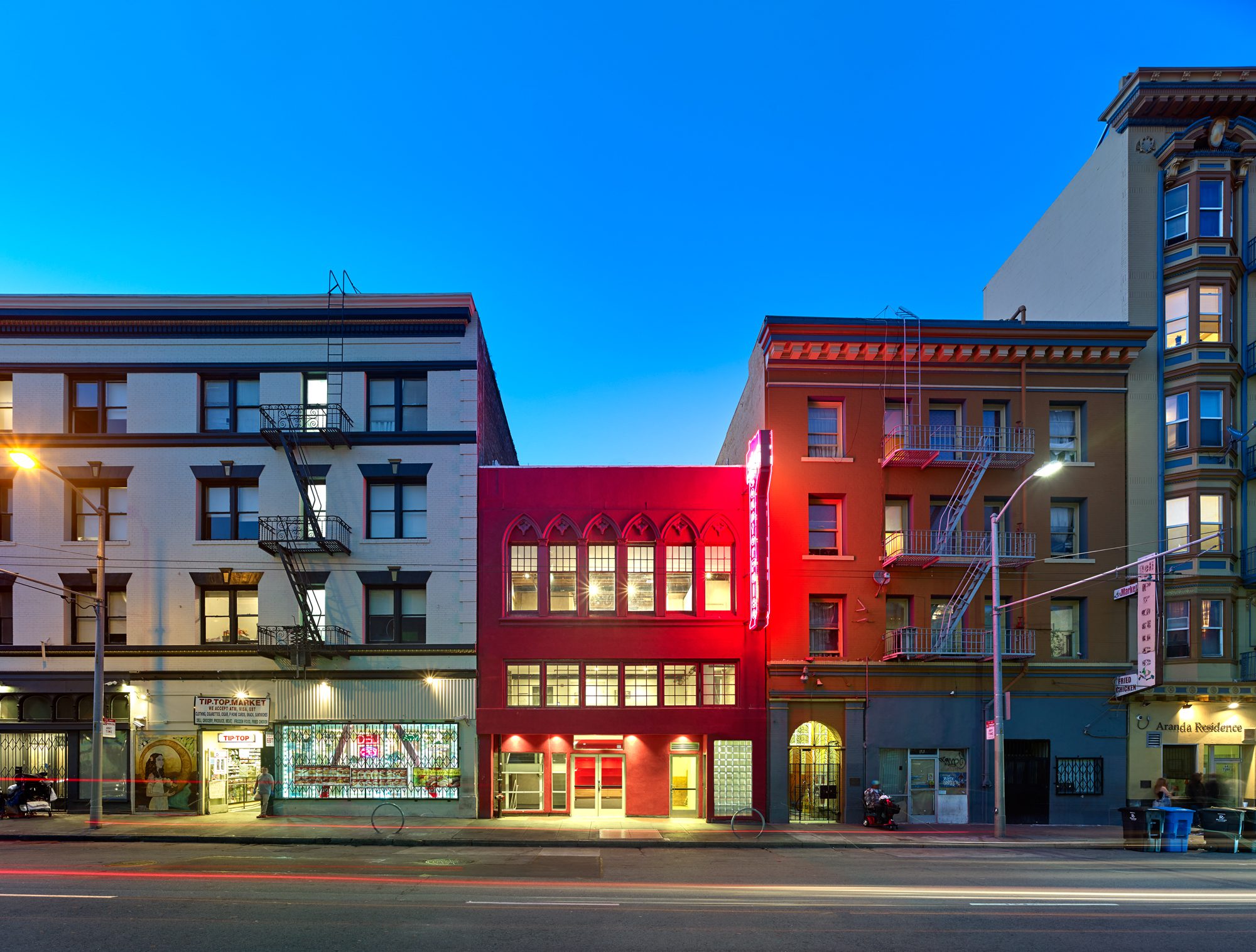
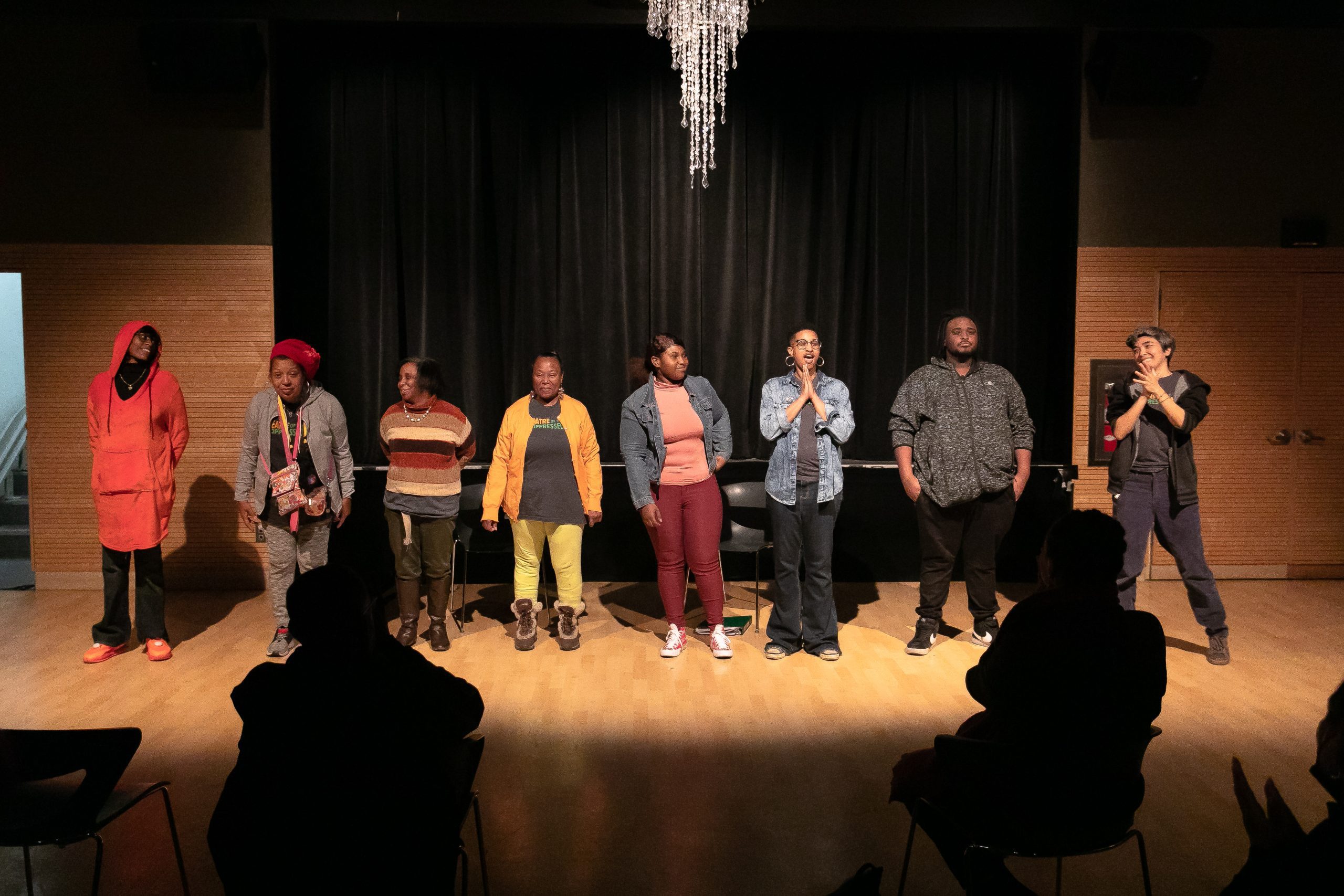
Good Day,
Thnx for the opportunity to comment.
I came to read this entry because I believed it about the power of film to cathect emotion (& therefore invest energy in social change). I learned a different valuable lesson though –
I’m struck by the similarity of the above ‘radical theater’ experience with a systems technique called ‘sculpture’. I have seen that used in family therapy and believe originated with the humanistic “action oriented” techniques. It can have power for the participants. I’m wondering how these opportunities can be scaled for policy change concerning our communities of need.
Thanks again,
– -Chad
Affordable Housing Advocate